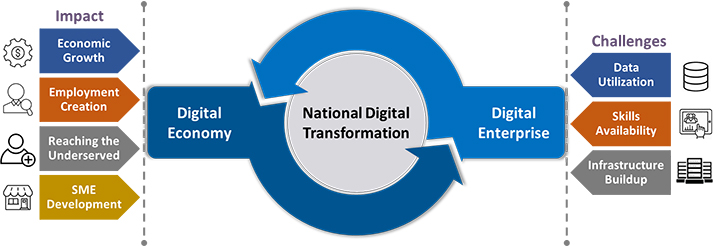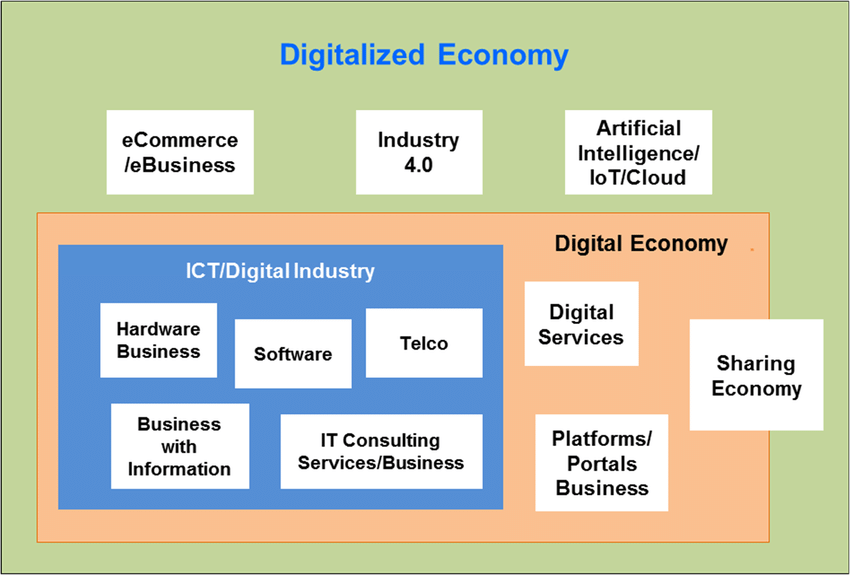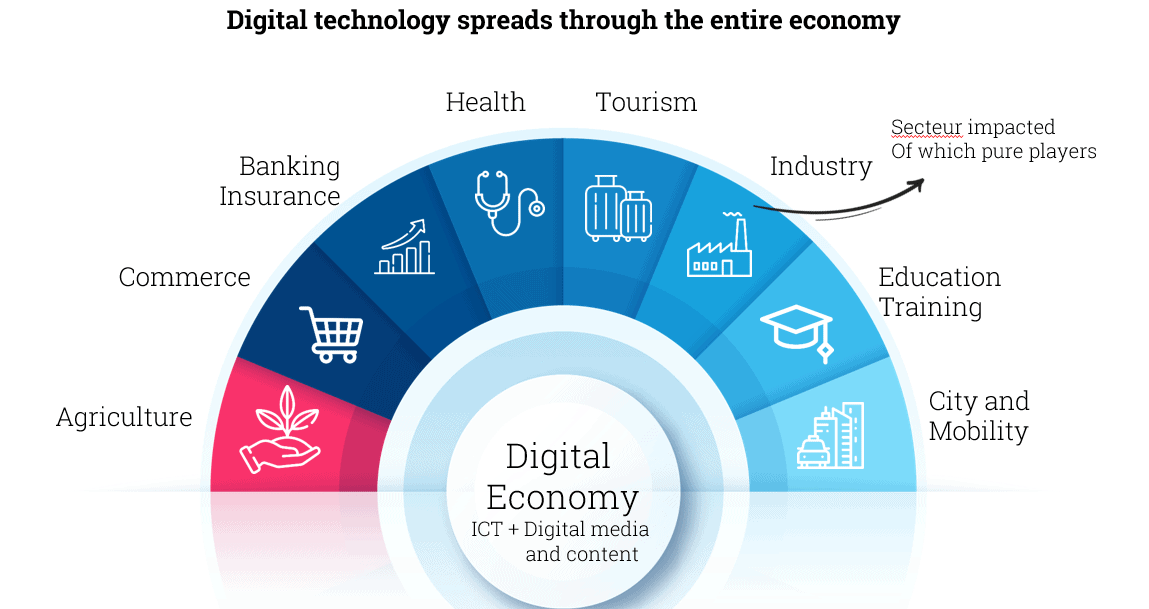Digital transformation definition: It’s the game changer for modern business. No fluff, no jargon—just a straight shot into how technology is rebooting the corporate world. Keeping up? That’s the million-dollar question. With digital tools taking over, it’s a sprint to stay ahead. Imagine reshaping your company’s future with every click, tap, and swipe. Here, we unlock that transformation—simple and clear. From core concepts to the hard-hitting effects on business strategy, we’re diving headfirst into the digital revolution. Ready to evolve? Let’s decode and conquer the tech age together.
Understanding Digital Transformation: A Primer
Definition: Digitization vs Digitalization vs Digital Transformation
What exactly is digital transformation? In simple terms, it’s when a business uses digital tools to change how it works and delivers value to customers. It’s kind of like when you play a game on your phone instead of with cards – the game itself hasn’t changed, just how you’re playing it. But it’s not just about getting new computers or software. It’s a deeper change that helps companies survive and thrive in today’s fast-moving world.
Now, some folks often mix up digitization, digitalization, and digital transformation. Here’s the lowdown.
Digitization is when you turn stuff like paper records into digital files. It’s like scanning a document.
Digitalization is a step up. When you digitalize your work, you use digital files and tech to make your job easier. Think about typing reports instead of writing them by hand.
Digital transformation, though, is a big deal. It’s not just about making tasks digital. It’s about shifting your whole business to work smarter with technology. It’s when companies change their game, like stores selling stuff online or using apps to order food.
Now, let’s dive deeper.
The Fundamentals of Digital Change in Today’s Business Landscape
Digital transformation isn’t just for tech companies. Every industry can benefit from this change. We’re talking about using tech to make better products, improve service, and make everything more efficient.
When a business decides to transform digitally, they’re looking at everything: customer service, the way their teams work, and even how they make decisions. The goal? To get ready for the future and be better at what they do.
They look at how tech like cloud computing can store info safely and let workers access it anywhere. They see how artificial intelligence can make smart guesses about what customers want. Tech like this can lead to big wins for businesses willing to take the plunge into the digital world.
Let’s talk about the everyday stuff too. Using tech can make businesses run smoother. Mobile tech lets people work on the go. Process automation saves time and cuts mistakes. And having good data—making sure it’s used right—helps businesses make choices that actually work.
Most importantly, going digital means they can meet evolving customer expectations. People want fast service and stuff that makes their lives easier. With digital tools, a business can offer that and stand out from the crowd.
But listen up; it’s not a walk in the park. The road to going digital is full of bumps. Companies have to teach their teams new digital skills and keep their info safe from hackers. It takes a big culture shift and getting everyone on board with the change.
In the end, it’s all about staying sharp in the digital era. Those who embrace tech and use it wisely can do great things. They can serve customers better and be ready for whatever the future throws at them. That’s what makes digital transformation such a big deal for businesses today.
The Why and How of Implementing New Technological Systems
Aligning Tech-Driven Business Changes with Organizational Goals
Imagine standing at the edge of a cliff. Below, there’s a new world – the digital era. To jump or not to jump? That’s what businesses decide when they think about going digital. I’ve helped many make that jump. It’s not about just adding tech. It’s about lining up tech with what you want to achieve. That way, every tech step pushes you towards your main business aims.
But how do we line up tech and goals? Let’s say your goal is to sell more products. Then, using the internet could be your first tech choice. You start selling online. That’s digital; you’ve paired tech with a goal. Now repeat that across all your business parts and keep your aims in sight. That’s the how.
Assessing Digital Maturity to Drive Enterprise Digital Overhaul
Big question time: How ready is your company for the tech age? You check this by what I call ‘digital maturity assessment’. We look at where you excel and where you need to grow in tech use. It’s like a tech health check-up for your business.
Doing well means you’re able to take in new tech, like cloud computing, without fuss. It’s like kids learning a new game. They get it fast, right? That flexibility is key for a digital overhaul – a massive tech update across your company. You want things working sleeker, data flowing better, and your team happy with tech. Why? So, your business thrives.
Next, we put the right tools in your team’s hands. Think about how robots help doctors do better surgery. Like that, but for your business. We pick tech that helps you do your work better, faster, and makes customers happier.
Tech like artificial intelligence can be a game-changer. It sorts data to help you decide quicker, lead the market, and wow customers. It’s a bit like having a super-smart helper in your pocket. Meanwhile, mobile tech lets you work from anywhere.
So, ready for the big leap into the digital age? It’s testing the waters, picking your tools, and teaching your team to swim. Then, you dive deeper, and tech becomes part of your daily work grind – easy and helpful. You get the work done better and meet customer needs easier. Plus, you’re set to rock any future changes the tech world throws at you.
Remember, tech isn’t just gadgets and wires. It’s a different way to think and work. A way that lines up with where we’re all heading – forward, fast, and into the future of doing business.
Navigating the Challenges and Opportunities of a Digital-First Future
Fostering a Culture Shift for Digital Evolution
Change can be hard, but let’s talk shop. Businesses can’t stick to old ways. They must evolve. This evolution means creating a work culture that’s all in on digital. It’s where all team members get why tech matters and how it helps. Think like a digital native, and you’re halfway there.
Culture is the secret sauce for a digital-first company. It’s making sure everyone’s on board with new tools and tech. For example, cloud computing isn’t just a tech term; it’s your new playground where ideas fly fast and free.
Addressing Challenges: Digital Skills and Cybersecurity in Transformation
Moving to a digital-first future has its hurdles. One biggie is learning new tech skills. Another is keeping data safe from hackers. Both are super important. You need to know your way around tech to be a pro today. And cybersecurity? Think of it as digital armor, keeping your online walls strong.
Learning shouldn’t scare you. It’s just adding new tools to your toolbox. Take mobile technology. It lets customers reach you anytime, right? So, knowing how it works = better service. It’s that simple.
Then there’s artificial intelligence. It sounds fancy. Really, it’s about machines thinking like us to make life easier. Imagine sorting tons of data in a blink. That’s AI in action.

Being ready for the future means getting these skills under your belt. And with them, you open doors to endless digital opportunities. Good thing is, many online courses are out there, and they’re easy to jump into. It’s like powering up in a video game. The more skills you have, the farther you’ll go.
But with great power comes great responsibility, right? As the world goes digital, the bad guys go digital too. So we must be like digital superheroes. We keep our work safe by understanding the importance of cybersecurity. Imagine a lock that keeps all your online treasures safe. That’s cybersecurity.
Protecting data is not just IT’s job. It’s on everyone for a good reason. Think of every username and password like a key to a secret base. You wouldn’t give away the key to your house, would you? It’s the same online. With the right skills and safety smarts, riding the digital wave becomes less scary and way more exciting.
Tech toys are fun, but remember, it’s about using them to get yourself ahead. It’s about turning challenges into wins. We’re all in this together, making the digital leap. It’s pretty thrilling – new skills, new tools, and new ways to keep it all safe. Sure, change takes work. But boy, is it worth it. Welcome to the digital playground – let’s make some waves!
Measuring the Impact and Ensuring Sustainability in Digital Transformation
The Role of Analytics in Shaping Data-Driven Strategies
In today’s tech age, data is a gold mine. It tells us what works and what doesn’t. Using analytics, we can measure how well our digital moves are doing. Think of it like a scorecard for our business. It shows if we’re getting good results from going digital. We look at sales, customer happiness, and how fast we do tasks. With this info, we make smart plans. We can find new ways to win over customers or make our work smoother.
Data isn’t just numbers. It’s feedback. It tells us what our customers like and what they need. Analytics turn data into insights. Like finding out what time people visit our website the most. Then, we can have our best sales staff ready for chat support. This helps us serve folks better. The more we learn from data, the better we become at making decisions.
Future-Proofing Through Investment in Digital Capabilities and Platforms
Investing in digital tech is like planting seeds for the future. We get ready for new ways to do business. If we use cloud computing, we’re ready for lots of customers from all over the world. If we learn about AI, we can answer customer questions any time, day or night. Mobile tech lets people shop from their phones. Everyone loves that! It also makes our team do their best work from anywhere.
We must keep up with changing tech to stay ahead. This means learning all the time and getting new tools that help our business run better. Future-proofing is about making sure we are ready for whatever comes next. It’s like training to be the best, so when the big game comes, we’re ready to play and win.
When we use new digital platforms, we make a place where our team and customers meet. We want this place to work well for everyone. This means having good tech and good plans. Like making sure our online store doesn’t crash when lots of people visit. And keeping all their info safe. Plus, helping everyone feel like they can use our tech with no trouble.
Making the jump to a digital-first business isn’t just a one-time thing. It’s a long journey with lots of learning. But it’s worth it. We get to serve our customers in amazing new ways. And our business grows stronger and ready for the future.
Remember, using tech the right way makes all the difference. We want to win in the digital game. Let’s use data to make smart moves and invest in the best tech. That way, we’re always one step ahead, ready for the digital era’s next big thing.
We dove deep into digital transformation and now we know, it’s not just about new tech. It’s a full shift in how businesses work. We looked at the basics, why it matters, and how to fit tech with our goals. We talked about getting ready for change and using data to make smart moves.
And don’t forget, we must keep learning and stay safe online. It’s a big leap, but with good planning and strong skills, it’s worth it. Stay focused on what’s ahead, and keep pushing your company to shine in a digital world. Our journey in tech is never done, but we’re set to win if we keep at it and adapt.
Q&A :
What exactly is meant by digital transformation?
Digital transformation refers to the integration of digital technology into all areas of a business, fundamentally changing how organizations operate and deliver value to customers. It’s a cultural shift that requires businesses to continually challenge the status quo, experiment, and get comfortable with failure. This process encompasses a wide range of activities, from updating existing business processes to creating new business models and revenue streams.
How does digital transformation affect businesses?
The effect of digital transformation on businesses is profound and multifaceted. It leads to enhancement of customer experiences, streamlining of operations, and the creation of new opportunities within the marketplace. Businesses can leverage data analytics for strategic decision-making, automate routine tasks to increase efficiency, and foster a digital culture that supports continuous innovation and agility.
Can digital transformation give a competitive edge to businesses?
Yes, digital transformation can provide businesses with a significant competitive edge. By leveraging new technologies to improve processes, engage with customers, and create more innovative products or services, businesses can differentiate themselves in the market. Companies that embrace digital transformation can adapt more quickly to market changes and customer needs, positioning them ahead of competitors who are slower to adopt these changes.
What are the key drivers of digital transformation?
The key drivers of digital transformation include technological advancements, changing customer expectations, competitive pressure, and the need for operational efficiency. A combination of emerging technologies such as cloud computing, artificial intelligence, Internet of Things (IoT), and mobile computing fuels the transformation, while customers expect personalized, on-demand services. Additionally, businesses need to evolve to stay ahead of new entrants and disruptive models within their industries.
What are some challenges associated with digital transformation?
Some challenges associated with digital transformation include difficulty in managing change among employees, security risks associated with new technologies, legacy system integration, and aligning transformation with business strategy. Moreover, it requires a significant investment in technology and talent, along with a clear vision and strong leadership. Companies often face the obstacle of creating a balanced approach that includes both technological innovation and human-centric design.


